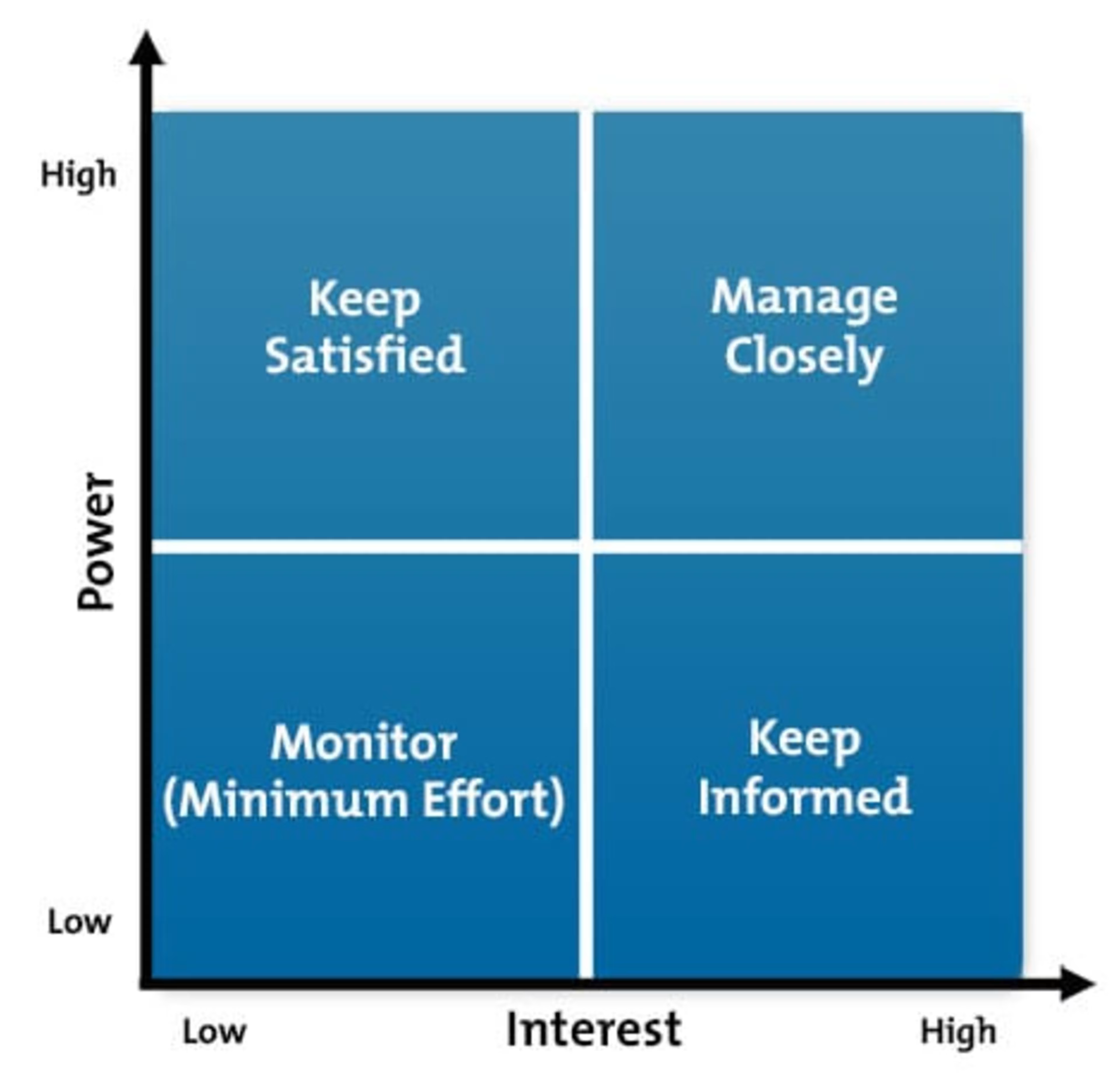“This isn’t exactly what I had in mind.”
That’s a phrase no project manager wants to hear after delivering his or her final product to a customer. More often than not, this project failure is a direct product of poor stakeholder management.

There are an unfortunate number of common, yet avoidable mistakes that project managers make when working with their stakeholders. We’ve uncovered three of these mistakes and have laid out a template for project managers to use when dealing with one of their project’s most important assets.
But first, what is a stakeholder?
Stakeholders are individuals or groups that have a literal “stake” in the project. Stakeholders might be a sponsor, creditor, employee, community, supplier, and/or, most commonly, a customer, among anyone else who can impact or be impacted by the project.
Mistake #1: Identifying and prioritizing the wrong stakeholders
A key part of stakeholder analysis is identifying who your stakeholders are and how much influence they have over your project. If you misidentify your stakeholders, important opinions are lost when designing your project’s plan. Failing to identify stakeholders can also have long-term consequences, as they have been devalued and will expect to be devalued in the future.
If you misread the importance of a stakeholder to a project, then it is impossible to objectively and accurately evaluate their opinions on how a project should progress.
The first step to remedying this mistake is to make a list of people and organizations that impact or might be impacted by the project. There may be some surprising stakeholders unveiled, like the CEO’s wife, media, or analysts.
Once you’ve laid out who your stakeholders are, chart them by how much power and influence they have over your project. Mindtools offers an outstanding tool to do so.

Mindtools recommends using a stakeholder’s position on the chart to determine how to communicate and work with them. For people with low interest and low power, keep tabs on their interest level as it may shift, but only update them with critical information. Those who have high power and low interest, work to satisfy them but don’t overwhelm them with too much communication.
For those with high interest and low power, the biggest thing this group wants is information. Keep them informed of the project’s process and update them as it progresses. Let them know about roadblocks and successes.
And for the high-interest, high-power stakeholders, otherwise known as “key stakeholders,” fully engage them with the process and do everything within your abilities to satisfy their requirements.
Mistake #2: Being unrealistic with your key stakeholders.
This mistake is more common than many project managers are willing to admit. Project managers are notorious for overpromising on a project and under-delivering… even when they know they are being overly optimistic. Work turned in under these conditions tends to be sloppy, ill-tested, rushed, and may even lead to project failure. This leaves both you and your stakeholders dissatisfied and disappointed.
It’s fine to have high expectations of your team—it’s important to take on a growth mindset when managing others. But with that said, you must be objective in analyzing deadlines and your teams’ capacity to complete the work set out for them. As I wrote in a previous post on project schedule mistakes,
“Do what you can to meet your stakeholder’s requirements, but take the time to evaluate risks associated with pushing deadline so hard. If it simply cannot be done, all stakeholders involved, including and especially your team, will appreciate your candor.”
Mistake #3: Failing to have a set stakeholder communication plan.
Based on your stakeholders’ power and interest in the project, you now know how communication is integral to working with stakeholders. But without laying out how often and what to communicate, project managers set themselves up for scope changes, project delays, and project failures.
Setting a stakeholder communication plan comes down to audience awareness. Take the time to break out what each stakeholder is interested in, and what challenges you face with them. For example, a client building a new office may be interested in how a project will affect their business’s public image. Frequent updates about environmental impact, roadblocks affecting the community, or positive community involvement would all be of highest priority to communicate regularly.
More?
Project managers make all kinds of mistakes with their stakeholders. What else should I have included? Do you disagree? Leave your thoughts in the comments below!
Header by Abby Kahler